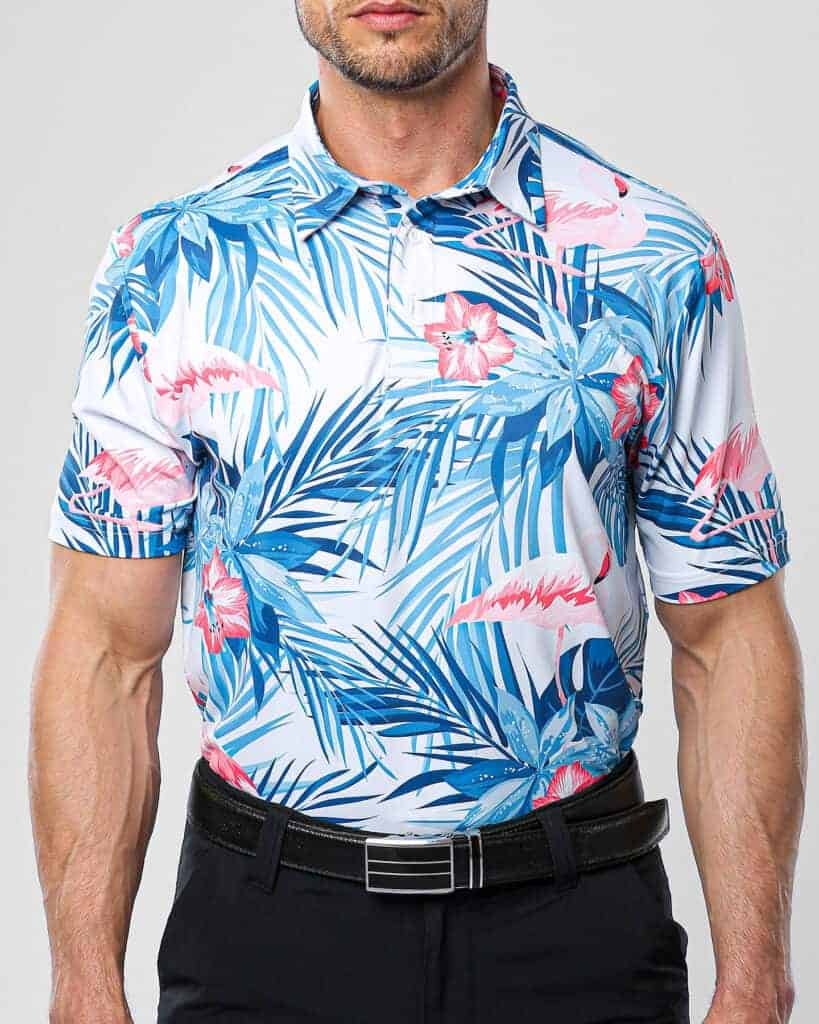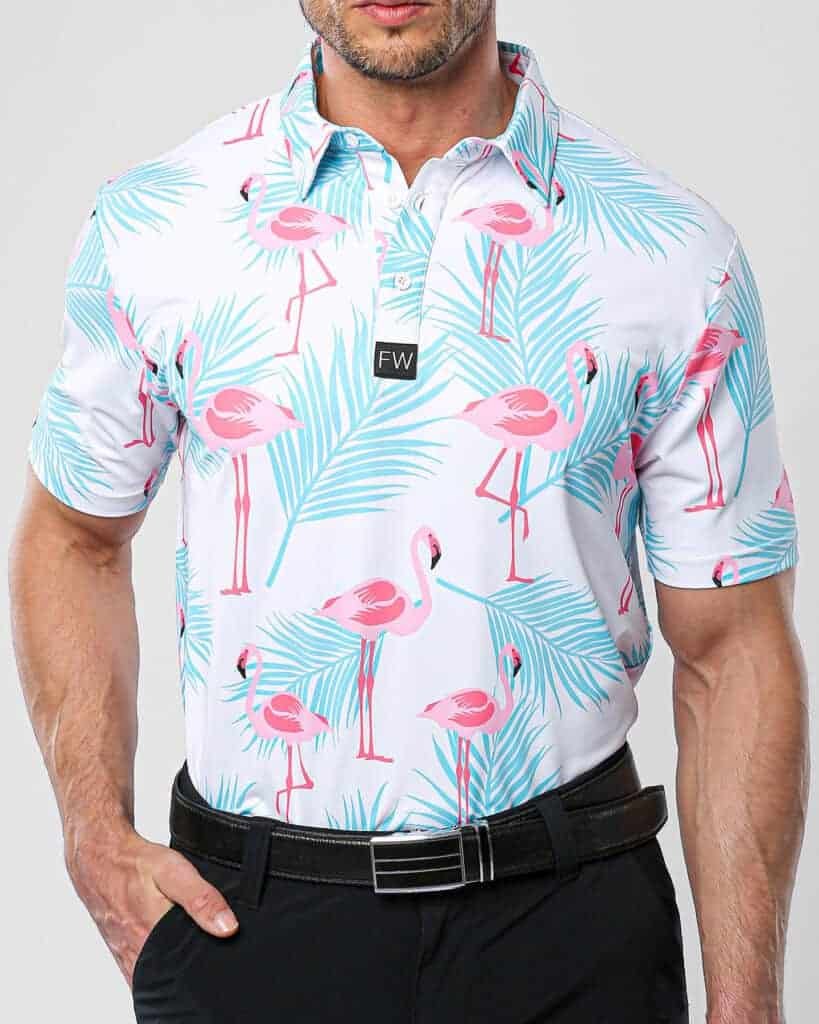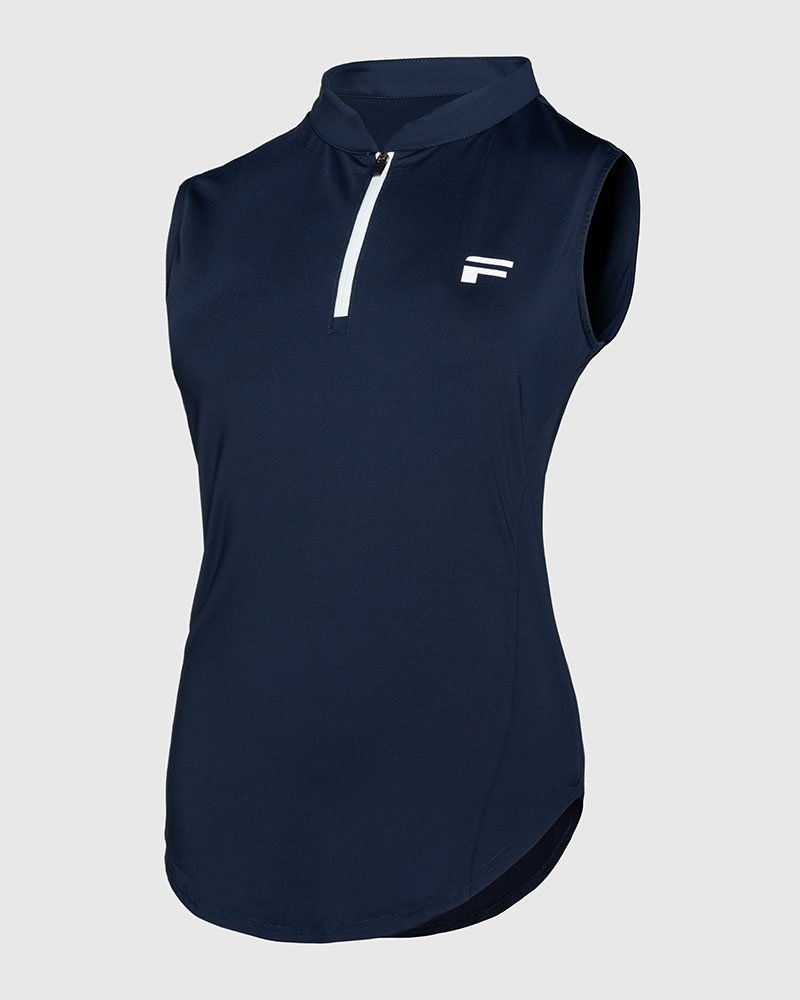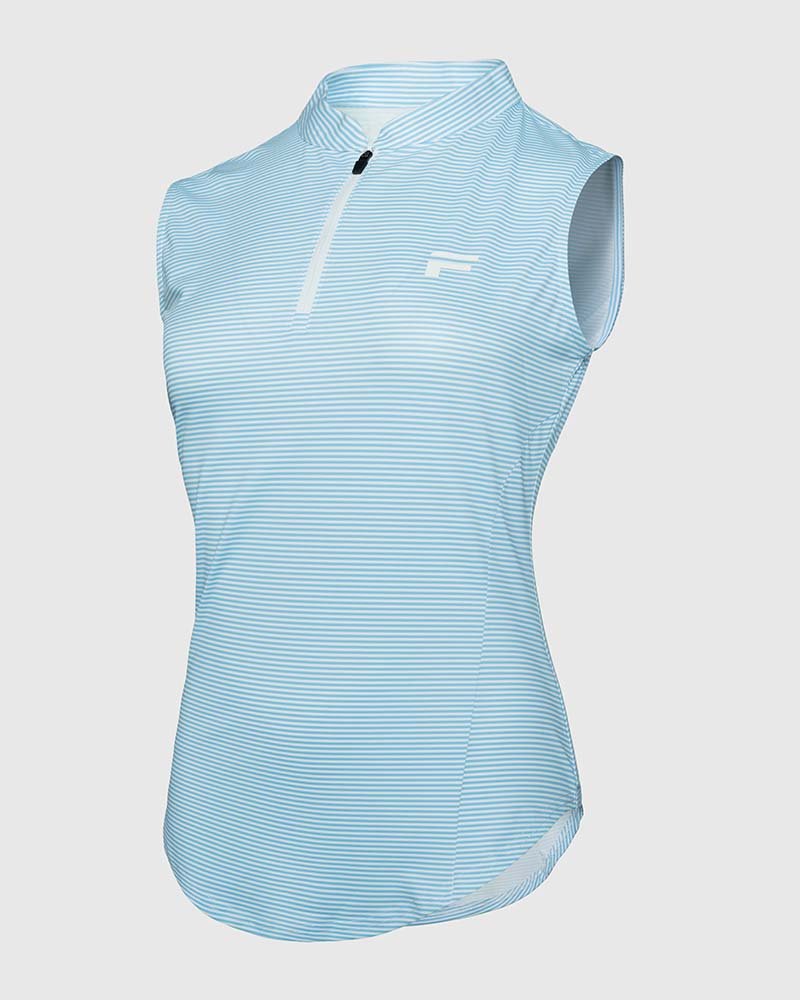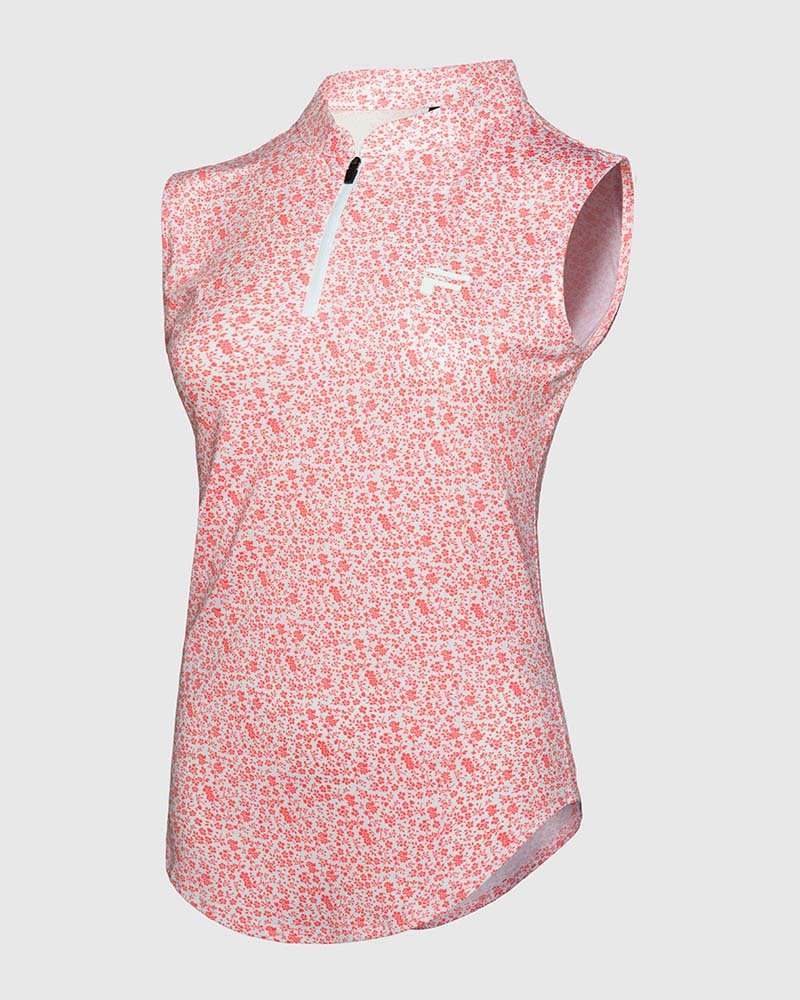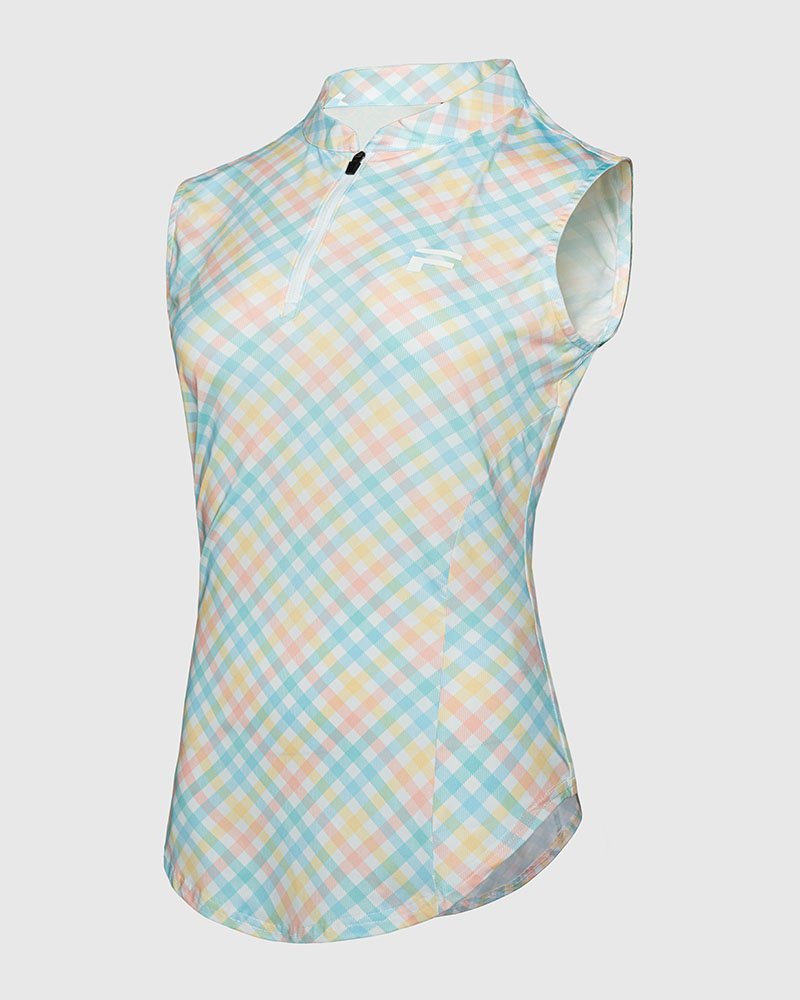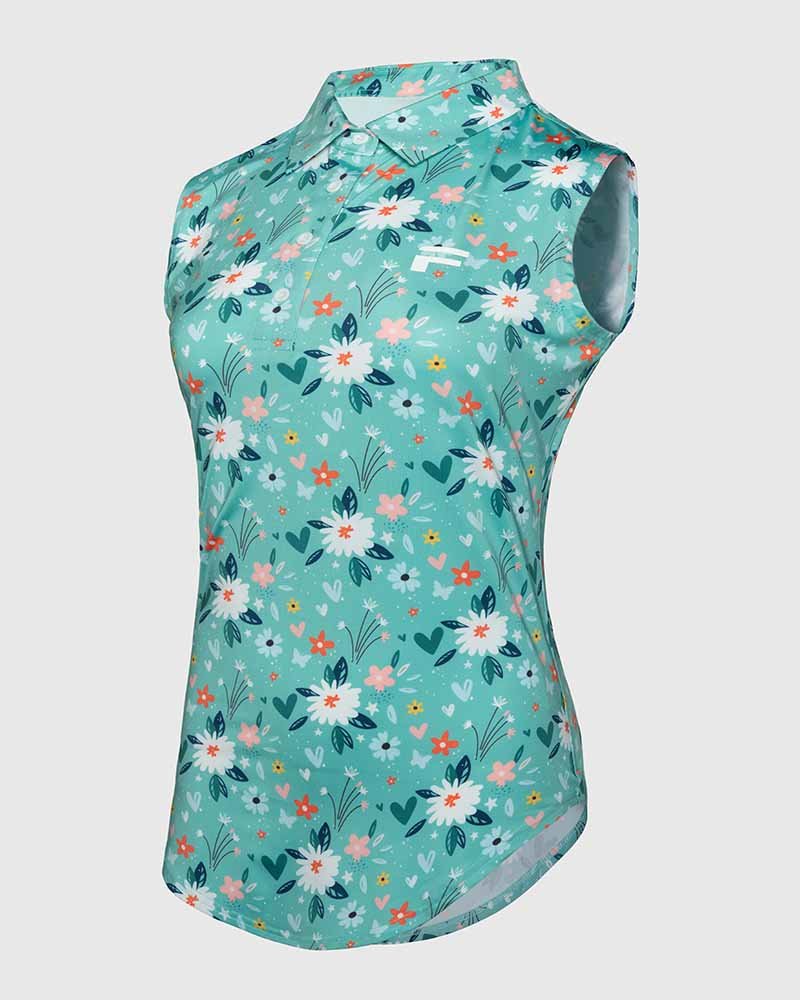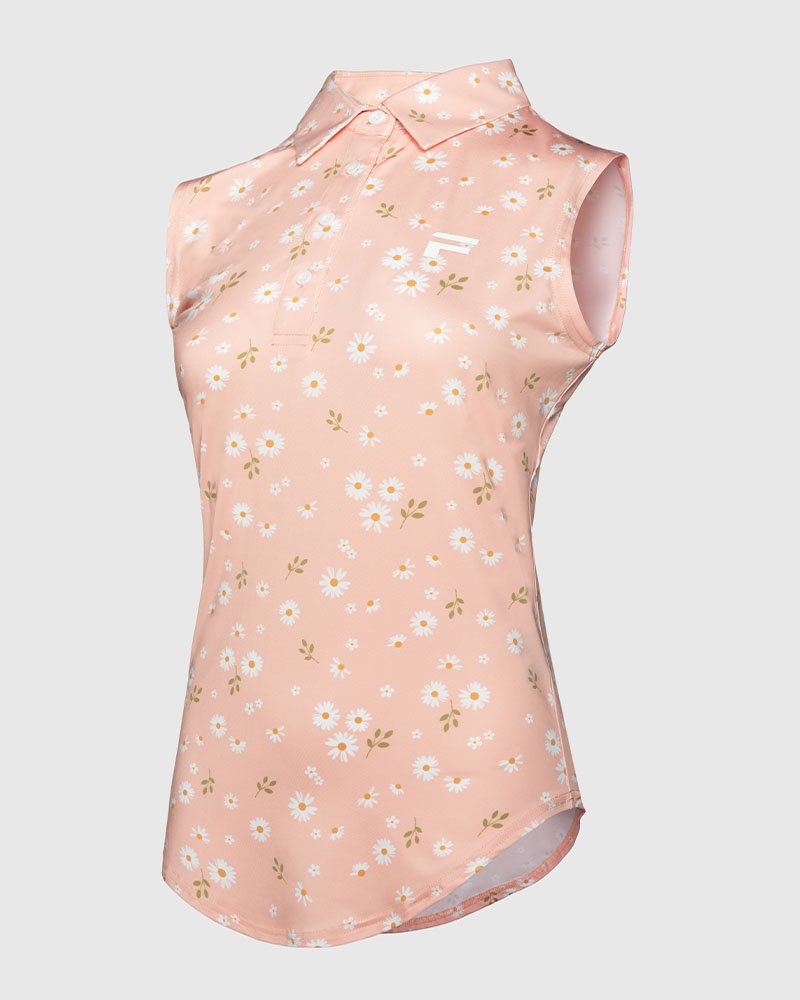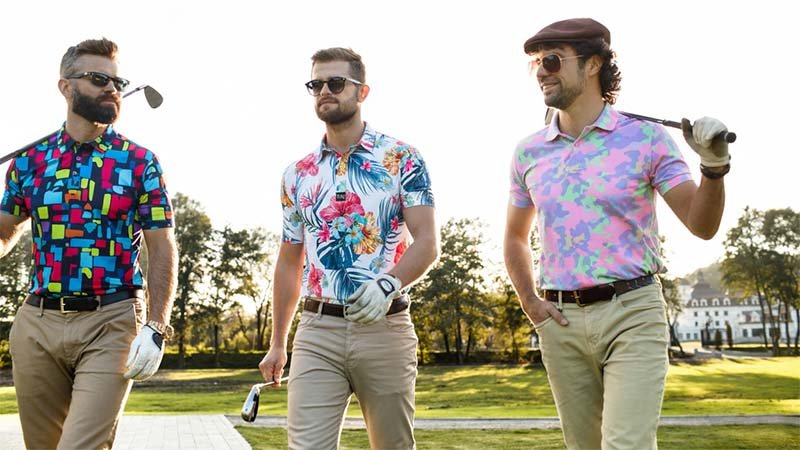Struggling to find a reliable factory for your golf apparel brand? A wrong choice can sink your business before it starts. I'll show you how to find the perfect partner.
To find the right golf clothing manufacturer, you must first clearly define your product's market position. Then, verify the factory’s specialized golf expertise, test their communication, and start with a small, flexible trial order to confirm their capabilities before committing to large-scale production.
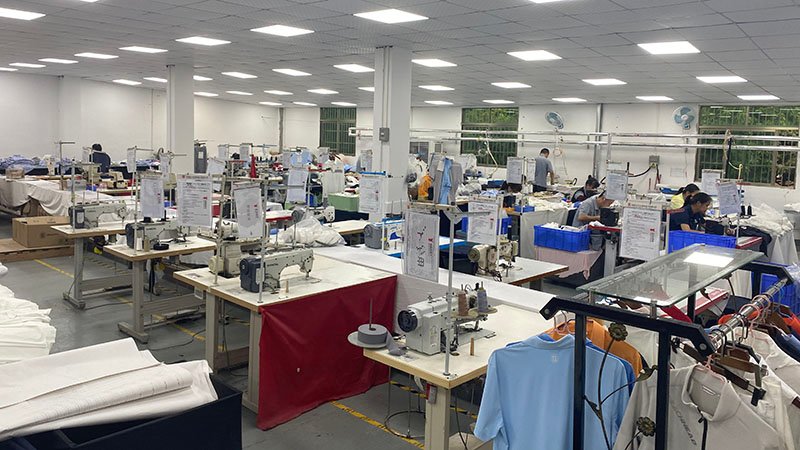
Finding a manufacturing partner can feel like searching for a needle in a haystack. I've been in this industry for over 15 years, and I've seen brands succeed and fail based on this one decision. The good news is that you don't need luck; you need a process. If you follow a clear, step-by-step method, you can confidently find a factory that will help your brand grow. Let's break down exactly how you can do that.
How to find a golf clothing manufacturer that suits you?
Finding the right manufacturer is one of the most important decisions you'll make for your brand. I've been on both sides of this conversation—as a factory owner and as a guide for new brands like yours. It’s not just about getting a product made; it’s about finding a partner who shares your vision for quality and growth. This journey requires patience and a clear plan. Let’s walk through the steps I've learned over many years to ensure you find a perfect match for your golf apparel line.
Step 1: How Do You Clearly Define Your Requirements?
Can't seem to find the right fit? It's frustrating when manufacturers don't get your vision. Let's create a clear blueprint they can't ignore.
To define your requirements, focus on four key areas: product specifics like designs and fabrics, your quality standards, production volume (MOQs), and your budget. Writing these down gives you a clear checklist.
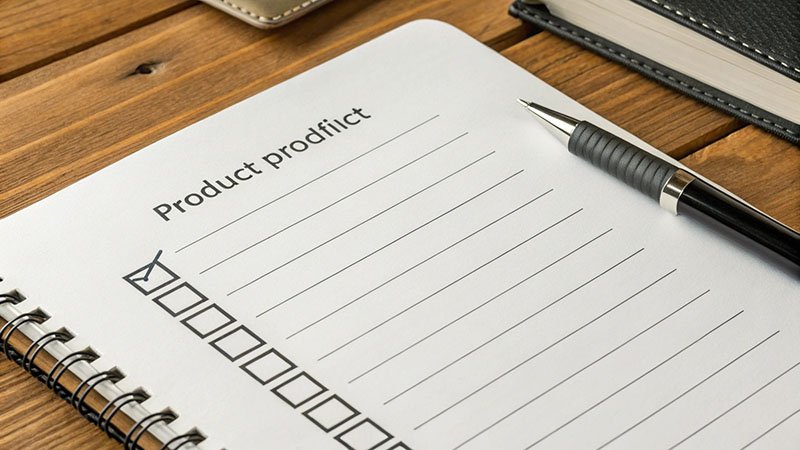
Before you even start looking for a partner, you need to know exactly what you’re looking for. A vague idea leads to vague results. I once worked with a young brand owner who was passionate but unprepared. He said he wanted "high-quality polos," but he couldn't specify the fabric blend, the type of stitching, or the target price. This lack of clarity led to weeks of wasted time and multiple sample revisions that could have been avoided. You need to create a detailed document, often called a "tech pack," that outlines everything. This is your brand's blueprint. The more detail you provide upfront, the more accurate your quotes will be and the smoother the production process will go. It shows potential partners that you are serious and professional.
Key Requirements to Define
- Product Specifications: What exactly are you making? Polos, pants, shorts, skorts? What are the specific designs, colors, and sizes?
- Fabric and Materials: What fabric composition do you want? A 92% polyester / 8% spandex blend is common for its stretch and moisture-wicking properties. What about zippers, buttons, and threads?
- Quality Standards: You need to define what "high quality" means to you. Is it the stitching density (stitches per inch), the color fastness, or the durability of the fabric? Be specific.
- Order Quantity: How many pieces do you plan to order per style/color? This will determine which factories can work with you, as many have a Minimum Order Quantity (MOQ).
| Requirement | Example Detail | Why It's Important |
|---|---|---|
| Product Type | Men's Golf Polo | Narrows the search to specialists in that garment. |
| Fabric | 92% Polyester, 8% Spandex, 180 GSM, moisture-wicking | Dictates performance, feel, and cost. |
| MOQ | 200 pieces per style, 50 per color/size | Filters factories based on their production capacity. |
| Target Price | $15 - $18 per unit (FOB) | Helps you find a partner within your budget from the start. |
Step 2: How Should You Research the Market for Manufacturers?
Searching for partners feels like finding a needle in a haystack. You waste hours online with no good leads. Here’s how to narrow your search effectively.
Research using online B2B directories like Alibaba, attend industry trade shows like the PGA Show, and ask for referrals from your professional network. A mix of online and offline research gives you the best results.

Once you have your requirements locked down, it's time to find potential partners. The internet is a great place to start, but don't stop there. Online platforms are useful, but nothing beats a personal connection. I remember attending my first big apparel trade show. Walking the floor, you can touch fabrics, see finished products, and talk face-to-face with the people who would be making your clothes. I met a future long-term client there who was just starting his brand. He was able to vet a dozen potential factories in two days—a process that would have taken months online. Combining different research methods gives you a much better picture of who is out there and who is genuinely good at what they do. Don't be afraid to dig deep and look beyond the first page of search results.
Effective Research Strategies
- Online Platforms: Websites like Alibaba or Made-in-China are huge directories. They are great for finding a large number of suppliers, but you must be careful to vet them thoroughly. Look for suppliers with good ratings, a long history on the platform, and "Verified" or "Gold" status.
- Industry Trade Shows: Events like the PGA Merchandise Show are invaluable. You get to meet factory owners and sales reps in person. This allows you to build a relationship and assess their professionalism instantly. It's a fantastic way to quickly qualify potential partners.
- Professional Referrals: Don't underestimate the power of your network. Talk to other brand owners, designers, or consultants in the apparel industry. A recommendation from a trusted source is often the most reliable way to find a great manufacturer. People are usually happy to share their good (and bad) experiences.
Step 3: What Key Questions Should You Ask Potential Suppliers?
Are you afraid of asking the wrong questions? You might miss critical details and end up with a bad partner. Let's arm you with the right questions.
Prepare questions about their specific experience with golf apparel, their minimum order quantities (MOQs), production lead times, quality control processes, and communication methods. These questions will help you filter out unsuitable candidates quickly.

Having a list of vetted questions is your most powerful tool during the initial screening phase. It’s like a job interview, and you’re the employer. Asking the right questions shows you’re knowledgeable and helps you compare manufacturers using the same criteria. I've seen many new brand owners focus only on price and MOQ. That’s a mistake. You need to understand their entire process. For instance, I always tell my clients to ask about the factory's communication style. Do they have a dedicated English-speaking contact? How often will they provide updates? Bad communication can cause huge delays and misunderstandings. Your goal isn't just to find a supplier; it's to find a partner who is transparent, capable, and easy to work with. These questions will reveal a lot about how they operate.
Essential Questions to Ask
- Production & Experience:
- What other golf apparel brands have you worked with? (This shows they understand the specific needs of the market).
- Can you share examples of golf polos or pants you have produced?
- What is your standard production lead time after a sample is approved?
- Quality Control:
- What is your quality control (QC) process?
- At what stages of production do you perform inspections? (e.g., fabric arrival, mid-production, and final inspection).
- What happens if a defect is found in the final batch?
- Logistics & Communication:
- Who will be my main point of contact?
- What are your payment terms? (e.g., 30% down, 70% upon completion).
- Can you handle shipping, or will I need to arrange my own freight forwarder?
Step 4: How Should You Make That First Contact?
Worried your first email will be ignored? A bad first impression can close doors before they even open. I’ll show you how to write an outreach email that gets a response.
Make your initial contact professional and concise. Introduce your brand, attach your detailed requirement sheet (your tech pack), and ask your list of key questions. A clear, professional email shows that you are a serious buyer.

Your first email to a potential manufacturer is your one chance to make a good first impression. As a factory owner, I receive dozens of inquiries every day. The ones that stand out are clear, professional, and contain all the necessary information. Vague emails like "I want to make shirts, what's your price?" are often ignored because they signal an unprepared client. On the other hand, an email that introduces the brand, attaches a detailed tech pack, and asks intelligent questions gets my immediate attention. It tells me this person has done their homework and is serious about their business. Personalize your email a little bit, too. Mentioning a specific product you saw on their website shows you've researched them and aren't just sending a mass email. This simple step can move you to the top of their reply list.
A Simple Outreach Template
Here's an example of an effective first email:
Subject: Golf Apparel Manufacturing Inquiry from [Your Brand Name]
Dear [Contact Person's Name or Sales Team],
My name is [Your Name], and I am the founder of [Your Brand Name], a new golf apparel brand based in [Your Country].
We are very impressed with the work showcased on your website, especially your [mention a specific product]. We are currently looking for a long-term manufacturing partner to produce our first collection of golf polos and shorts.
Attached, you will find our detailed tech packs for each style. Please review them and let us know if this is a project you would be interested in.
Could you please also provide answers to the attached list of questions regarding your production capabilities, MOQs, and lead times?
Thank you for your time. We look forward to hearing from you.
Best regards,
[Your Name]
[Your Brand Name]
[Your Website/Contact Info]
Step 5: How Do You Properly Evaluate Samples and Quotes?
You got samples, but how do you judge them? A low price can be tempting, but poor quality will sink your brand. Let's break down how to evaluate both.
Evaluate samples for fabric feel, stitching quality, color accuracy, and overall fit. Compare quotes not just on price, but also on included services, payment terms, and shipping costs. The best value is not always the lowest price.

This step is where things get real. Getting that first sample in your hands is exciting, but you need to be critical. I always advise brands to create a sample evaluation checklist. Check every detail: the feel of the fabric, the evenness of the stitching, the quality of the zippers, and the accuracy of the colors against your Pantone specifications. Don't be afraid to put it through a "wear test"—wear it, wash it, and see how it holds up. At the same time, you'll be looking at quotes. A cheap price can be a red flag. I learned early on that chasing the lowest cost often leads to problems—poor quality, missed deadlines, or hidden fees. You need to compare quotes like-for-like. Does one price include shipping while another doesn't? Are the payment terms favorable? The goal is to find the best overall value, not just the cheapest unit cost.
Comparing Quotes and Samples
| Aspect | What to Look For | Red Flags |
|---|---|---|
| Sample Quality | Straight seams, even stitches, accurate colors, fabric feels as specified, good fit. | Loose threads, crooked seams, off-colors, cheap-feeling fabric. |
| Quote: Unit Price | A price that aligns with your budget and seems reasonable for the quality. | A price that is significantly lower than all other quotes. |
| Quote: Terms | Clear terms (e.g., FOB, EXW), reasonable payment structure (like 30/70). | Vague terms, demand for 100% upfront payment. |
| Quote: Included | Clear list of what's included (packaging, labels, etc.). | Hidden costs or things you assumed were included are extra. |
Step 6: Is a Factory Visit Really Necessary?
Unsure if you should visit the factory? Skipping this step is a huge risk that can lead to major production issues later. Let's discuss why it's so important.
Yes, a site visit is highly recommended if possible. It lets you verify their facilities, meet the team, see their quality control in action, and build a stronger relationship. If you can't go, hire a third-party agent.
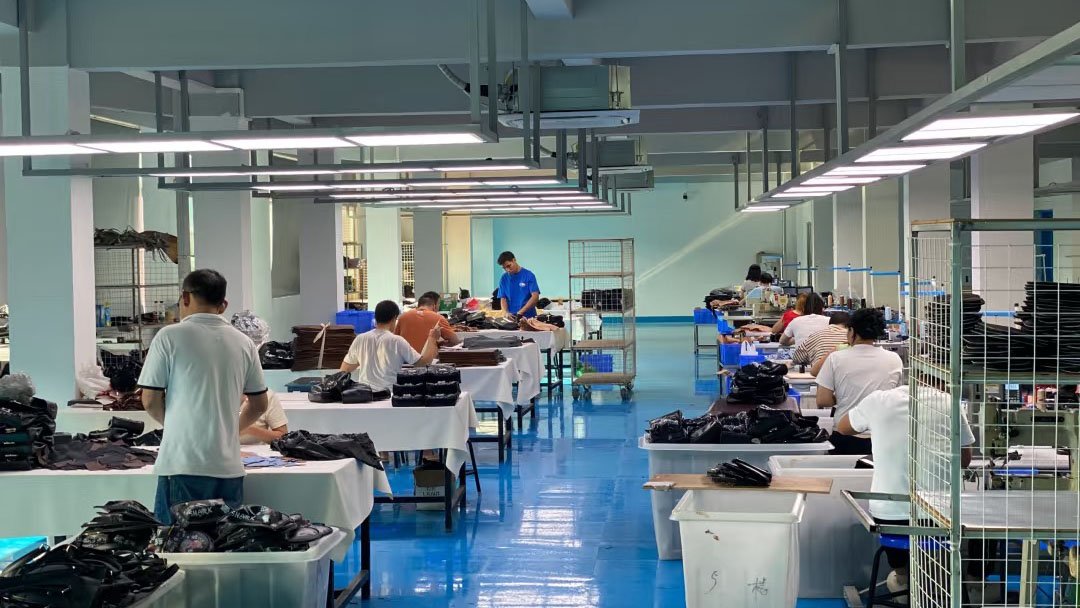
I cannot stress this enough: if you can, visit your top two or three potential factories. Photos and videos on a website can be deceiving. A visit tells you everything. You can see the condition of the machines, the organization of the production floor, and the working conditions for the employees. A happy, well-managed workforce produces better quality products. A site visit is also about building a personal relationship. When I meet a brand owner in person, it creates a level of trust and commitment that you just can't get over email. It shows you are invested in the partnership. Of course, international travel isn't always possible, especially for new brands. In that case, you have options. You can hire a reputable third-party inspection service in that country to visit on your behalf. Or, you can request a live video tour of the factory. It’s not a perfect substitute, but it's much better than flying blind.
What to Look for During a Visit
- Cleanliness and Organization: A clean, well-organized factory is a sign of a well-run operation. Chaos on the production floor often leads to mistakes.
- Equipment: Is their machinery modern and well-maintained? Outdated equipment can lead to lower quality and slower production.
- Quality Control Station: Ask to see their QC station. Do they have a dedicated area and team for inspecting garments?
- The Team: Meet the manager, your potential point of contact, and the people on the floor. It helps you understand their company culture.
Step 7: What Should Your Manufacturing Contract Include?
Signing a contract feels intimidating. You worry about missing a crucial clause that could cost you thousands. Let’s make sure your contract protects you and your brand.
Your contract must be detailed. It should include final product specs, quality standards, pricing, payment terms, production timelines with penalties for delays, and ownership of your intellectual property. A clear contract prevents future misunderstandings.
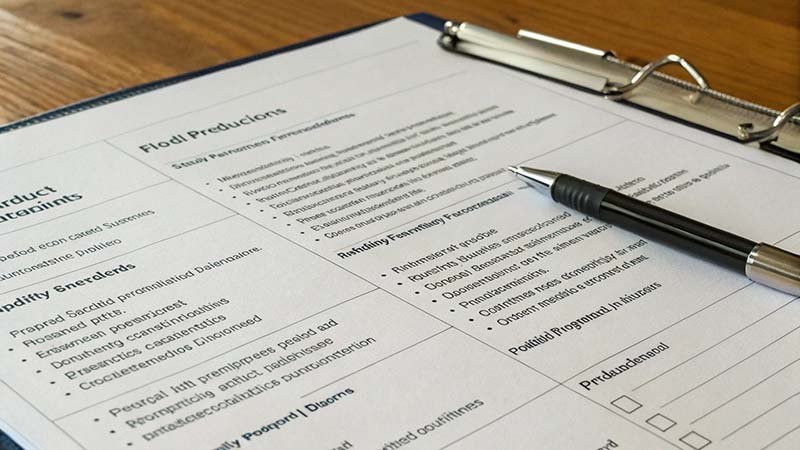
The final step is the contract, or what we often call a Manufacturing Agreement. This is your safety net. It should leave no room for interpretation. Everything you have discussed and agreed upon needs to be written down and signed. I have seen handshake deals go wrong, and it’s always a painful lesson for the brand owner. Your contract protects both you and the manufacturer by creating clear expectations. It should explicitly state the approved sample, the exact materials to be used, the final price per unit, and the full production schedule. One of the most important clauses is about penalties. What happens if the shipment is late? What happens if the final products don't meet the agreed-upon quality standards? Having this defined in the contract gives you leverage. I always recommend having a lawyer who specializes in manufacturing or international trade review the contract before you sign it. It's a small investment that can save you a fortune later.
Non-Negotiable Contract Clauses
- Detailed Product Specifications: Reference the approved final sample and tech packs.
- Payment Terms: Clearly state the payment schedule (e.g., 50% deposit on order placement, 50% upon quality inspection approval before shipping).
- Production & Delivery Schedule: List firm dates for the start and end of production, as well as the shipping date. Include a clause for penalties for late delivery.
- Quality Assurance: Define the quality standard and the inspection process. Specify who is responsible for the cost of rejected goods.
- Intellectual Property (IP): Include a clause that states you own all rights to your designs and brand, and the manufacturer cannot share or reproduce them for anyone else.
Conclusion
Finding the right manufacturer is a careful, step-by-step process. Follow these steps, trust your gut, and you will build a partnership that helps your golf apparel brand succeed.
What core requirements should you define when screening golf clothing suppliers?
Unsure what to ask a potential supplier? Vague questions get vague answers, wasting your time and leading to a poor partnership. Define your product first to filter out 90% of bad fits.
The most crucial first step is to define your product’s target market. Are you creating premium polos for exclusive country clubs or affordable, stylish shirts for the mass e-commerce market? This single decision dictates the fabrics, craftsmanship, and cost you need from a manufacturer.
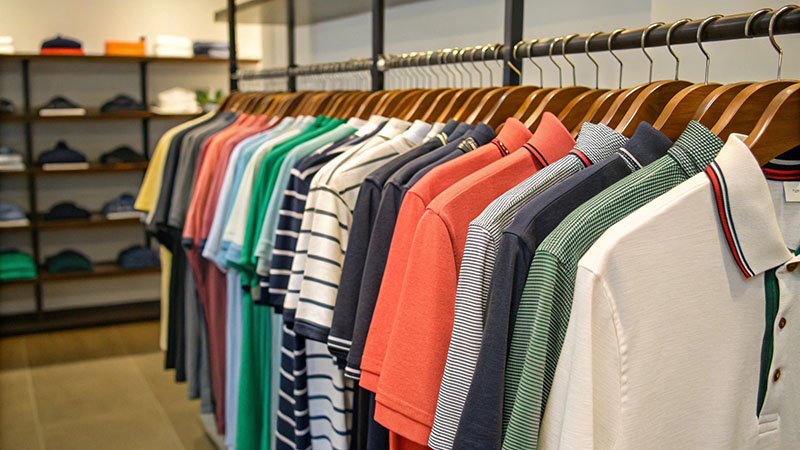
In my experience with over 300 global brands, the most common mistake I see is a new brand owner asking me, "Can you make a polo shirt?" It seems like a simple question, but it tells me nothing. My first question back is always, "What kind of polo are you trying to make?" This is where you need to be specific. Your answer determines the entire direction of our partnership.
To help you, let's break down the two main paths:
| Product Type | Key Focus | Fabric Example | Manufacturing Needs |
|---|---|---|---|
| High-End Club Custom | Performance, prestige, feel | Premium technical fabrics like moisture-wicking materials from Toray in Japan. | Precision stitching, premium finishes, attention to every detail. |
| Mass-Market E-commerce | Cost-control, visual appeal | Durable, cost-effective polyester blends that look great in photos. | Efficient production, consistent quality at scale, competitive pricing. |
Defining this upfront is not just about price. It's about finding a partner who understands your vision. A factory that excels at mass-market production might not have the right equipment or skills for a luxury garment, and vice versa. Be clear about who your customer is before you ever contact a supplier.
How can you assess a manufacturer’s quality control and production capabilities?
Every factory website claims they have excellent quality control. But how can you be sure before you've already paid for a bad production run? You have to look for specific signs of craftsmanship.
You can assess a manufacturer by verifying their “golf DNA.” Look for a dedicated sampling room for golf apparel, a library of specialized golf fabrics, and advanced techniques like three-stage pre-shrinking for collars and cuffs. These details prove true expertise.
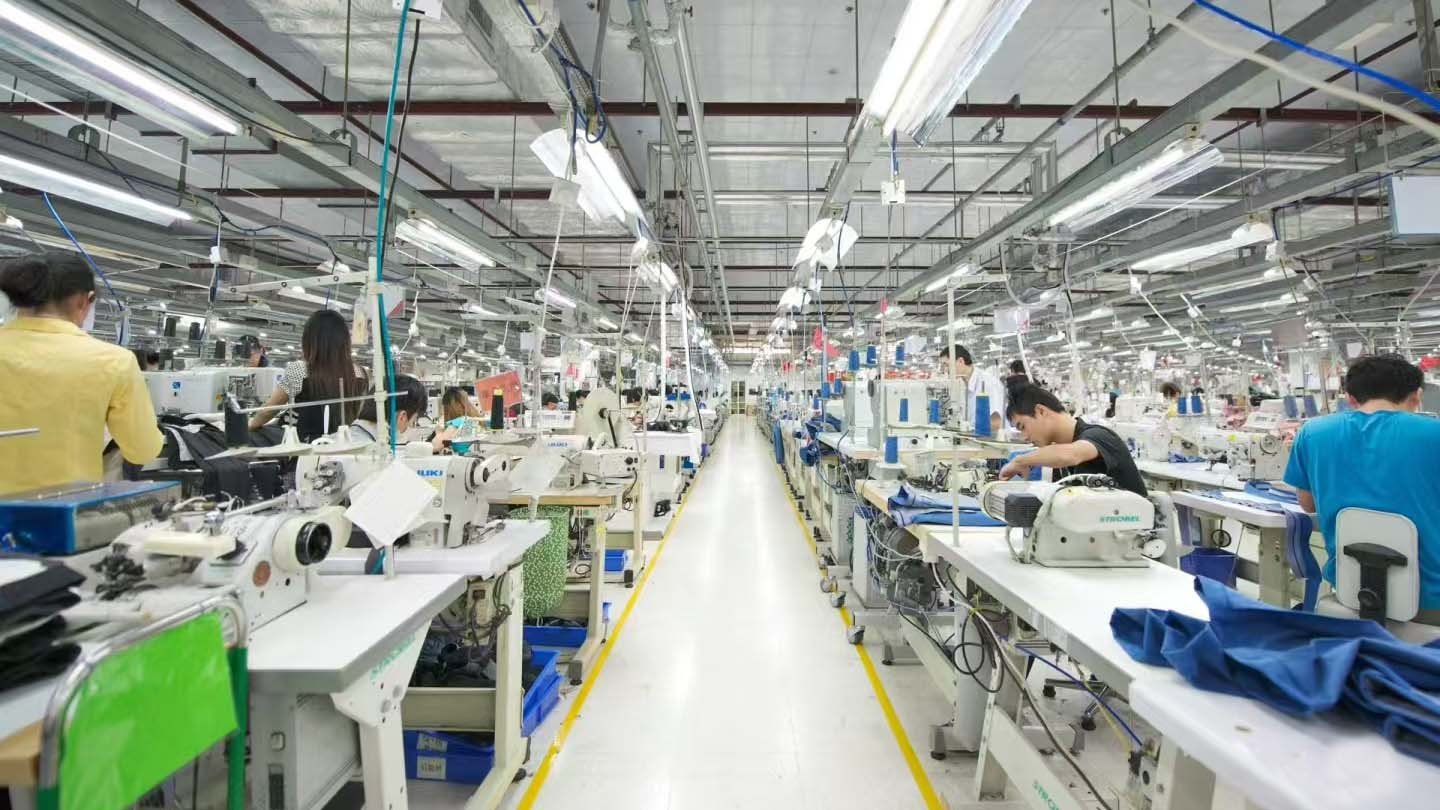
A true golf apparel specialist operates differently from a general sportswear factory. Here’s what I tell clients to check for, whether in person or on a video tour. Last year, I helped an Australian client vet a factory that called themselves a "golf expert." During the video call, I noticed they were using a standard flat-seam machine on the hem of a polo. This is a huge red flag because that seam will likely burst after a few powerful golf swings.
Here is what to look for to verify a factory has a real "golf gene":
- Specialized Production Lines: Ask to see their sewing floor. Do they have a dedicated line for golf apparel using specialized equipment, like the Brother sewing machines we use at FUWAY? Or do they mix golf shirts in with tracksuits and t-shirts?
- A Deep Fabric Library: A real expert will have a physical library of fabrics ready to show you. I insist that we keep at least five types of golf-specific materials in stock, including advanced options like UV-protective fabrics from Schoeller in Switzerland.
- Advanced Finishing Techniques: I learned a key technique from a Japanese client years ago: a three-stage pre-shrinking process for collars and cuffs. This prevents them from warping after washing. Ask about these small but critical details. Also, look for industrial steam-shaping equipment in their finishing department, not just basic hanging irons. This is essential for the structured fit of a quality golf polo.
What key factors should you consider when choosing between domestic and overseas manufacturers?
Choosing between a local factory and an overseas one is a big decision. One offers convenience while the other promises lower costs, but both paths have hidden risks if you're not careful.
When choosing, weigh cost, communication, quality expertise, and lead times. Domestic manufacturing offers easier communication and faster shipping but costs more. Overseas partners, like us, provide significant cost advantages and specialized skills but require thorough vetting and clear communication.
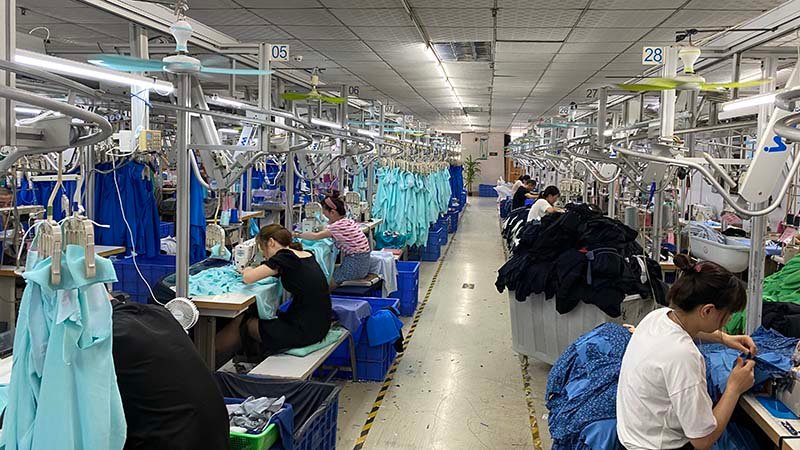
Many new brand owners get stuck here. The decision isn't as simple as comparing the unit price. You have to look at the total picture. I always advise my clients to think about the "total cost of ownership," which includes not just the price per shirt but also shipping, import duties, and, most importantly, the cost of mistakes. Here is a simple breakdown of how I see it:
| Factor | Domestic Manufacturer | Overseas Manufacturer (like FUWAY) |
|---|---|---|
| Unit Cost | Generally higher due to labor and overhead costs. | Generally lower, allowing for better profit margins or competitive pricing. |
| Communication | Easier, with no time zone or language barriers. | Requires clear processes. A good partner will have fluent English-speaking staff. |
| Expertise | May be a generalist unless you find a rare local specialist. | Often highly specialized. We, for example, only do custom sportswear. |
| Lead Time | Shorter shipping times. | Longer shipping times, but a reliable partner manages production schedules well. |
| Flexibility | May offer lower MOQs (Minimum Order Quantities). | A good partner will be flexible and work with new brands on smaller test orders. |
The key is not which one is better, but which one is better for you. An overseas partner with proven expertise can offer a huge advantage, but only if you know how to verify their reliability first.
How can you effectively verify a manufacturer’s reliability and delivery performance?
A promise on a website means nothing. Miscommunication or a lack of attention to detail from a factory can cause huge production errors. I use a simple test to see if a factory is truly reliable.
The best way to verify a manufacturer’s reliability is by testing their attention to detail. Send them a technical design file, or "tech pack," with a few intentional mistakes. A great partner will immediately question them. A bad partner will just make the mistakes.
This simple test has saved my clients from disaster. Last year, a new brand from the U.S. was evaluating us and another factory. I encouraged them to try this trick. They sent both of us a tech pack for a polo shirt that had three subtle but critical errors in it. One of the errors was listing a "seamless bonded" shoulder seam but then specifying a "standard overlock stitch" in the notes.
My development team spotted the contradiction within an hour and sent an email asking for clarification. The other factory said nothing. The client later told us that if they had gone with the other factory, they would have produced 150,000 shirts with the wrong seam, a mistake that would have ruined the product's performance and comfort.
A factory's response tells you everything. Do they just take orders, or are they a true partner invested in your success? Reliability isn't just about meeting deadlines; it's about caring enough to get the details right. A factory that asks smart questions is a factory you can trust.
How should you manage risks and optimize your supply chain during negotiation and long-term cooperation?
You've found a factory that looks good, but how do you start? Going all-in on a massive first order is a huge risk. You need to test the waters first with a smart trial order.
Always start with a small trial order to test a manufacturer’s real-world flexibility. Ask for mixed colors and sizes to test their production planning. Add a unique custom feature to see how they handle special requests before you commit to a larger volume.
Negotiation isn't just about price. It's about building a partnership and managing your risk. I once had a client from Germany who wanted to test us. He asked for a small, 200-piece trial order using a very specific recycled polyester fabric. It was a difficult request for such a small batch, and the material cost was 30% higher. But we adjusted our line and made it happen. He’s been a loyal partner ever since.
Here’s how you can structure a small first order to learn the most:
- Request Mixed SKUs: Ask for your 200 or 500 pieces to be split across a few colors and sizes. This tests their ability to manage complex production planning, not just a simple, single-item run.
- Add a Custom Detail: Ask for one or two unique modifications. For example, we developed a hidden pocket for ball markers that we can add to polos. See if they can execute your custom idea perfectly on a small scale.
When you get the final quote, remember what I always tell my clients: "Don't just look at the number on the quote; calculate the cost of five rework cycles, wasted shipping, and customer complaints." We have a UK brand we've worked with for eight years. Our unit price was 5% higher than a competitor's, but our 98% first-time pass rate on quality inspections means their total cost is actually 12% lower. That's the value of a true partner.
Conclusion
Finding the right manufacturer comes down to a clear process. Define your product, verify their "golf DNA," test communication, and start small. Choosing a partner is about total value, not just price.




